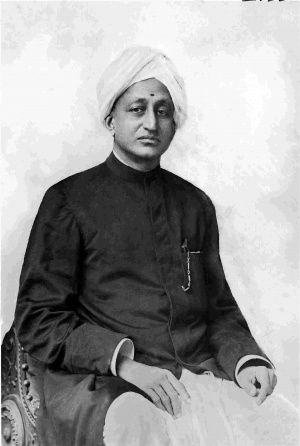For smooth Ad free experience
For smooth Ad free experience
If the indigenous political parties, in British India, advocating for integrity can be seen as the Justice League, he would definitely be the Green Lantern- a symbol of probity and morality. Let's not waste any more time rejoicing his lifetime achievements.

Born on 1st October 1842
Throughout our schooling, we all have been ascertained with the idea of itinerant courts, the makeshift courts which used to migrate all over the kingdom to outstretch equity to those badly off areas, deluged by anarchy. It was an unblemished system of its time, devised to warrant the inception of law and order at every corner of the kingdom.
In British India, when the frail voices of the poor peasants and dispossessed zamindars were vanquished by the mighty influential’s power, a manifestation of those itinerant courts dawned to ensure justice on those ill-lit realms. In the corroded but glorious pages of Indian history, the messiah is cherished as S. Subramania Iyer. On a closer view to his anecdotes, let us now dig into the Subra'mania' and his appeal for clemency over the mistreated sections of the country.
Our Subbier was born in Madurai, an essential fraction of the Madras Presidency, in 1842. Regrettably, he lost his father at a very young age. His education was emboldened by his supportive mother, and a very hard-working elder brother, Ramaswamy Iyer, who was initially in Government Service but his uphill battle scored him the prize of the head clerk’s position.
With the completion of his education from Zilla High School at Madurai, he moved forward by attaining a distinction. His protective mother’s unwillingness to let him set off far and wide made him proceed within the boundaries of Madurai, tracing the footsteps of his adored brother. He joined the Deputy Collector’s office as a clerk. With his brassbound gusto, he studied for the examination of the Pleader’s in a much-concealed manner and passed it with flying colors, landing him on the first spot in the qualified list.
But his success was thrown away by the snappish, discriminatory shrewdness of the District Judge, R. R. Cotton, when Subramania was not allowed to practice; the felony being not saluting the court when he was present earlier there to seek permission. With the tides of the Criminal Procedure Code hitting the shores of the courtroom in 1862, Iyer’s merits got their rightful place when he was appointed by the District Magistrate as the Public Prosecutor. Since the shadow of R. R. Cotton was still lurking around, he denied the offer and went on with the clerking business. But that didn’t take away his passion for the establishment of uprightness.
His opportunity to start practicing as a Vakil was coupled up with the passing of B.L. Examination and the apprenticeship under Barrister-at-Law, J. C. Miller. His affluence as a lawyer reached to a height from where he was actively involved in the public complications that Madurai was doomed with.
In 1870, his promotion flew in as the Municipal Commissioner and a member of the Local Board. The most remarkable case was of retrieving the funds of 40,000 that the Devasthanam Committee of the Madurai Meenakshi Amman Temple failed to account for. He was selected as the Chairman of the Reception Committee, shaped to welcome Prince Charles of Wales in the town. In 1884, he was invited to join the Madras Legislative Council as a non-official member. His career as the Government Pleader was marked by two striking cases; the Nageswara Iyer Forgery Case and the Tirupathi Mahant Case.
The most exceptional of all his achievements was to emerge as one of the founding members of the Indian National Congress. After contributing as a delegate in the conferences and ensuring Congress’s power in Madras as the Judge of the High Court, he readily served as the President of All India Home Rule League, formed by Dr. Annie Besant, in 1916. The arrest of Dr. Annie Besant and her colleagues was the first issue taken up by Subramania, and he organized movements for their release, knowing it might cause a breach between him and the Government.
Whose name pops up in our minds whenever we hear about the valiant, refusing his knighthood from the British? The most common answer will be Kobiguru Rabindranath Tagore. There’s another audacious hero, to our surprise, who’s been added to the list of this familiar designation.
S. Subramania Iyer refused his knighthood after his proposal to fix the prevailing political imbalance that was rebuked by Edwin Montagu and Lord Chelmsford while they were visiting Madras.
Without embracing the knighthood, he came to be glorified as the knight, not just by the men of Madras, but our country as a whole.
0
You might be interested in reading more from
